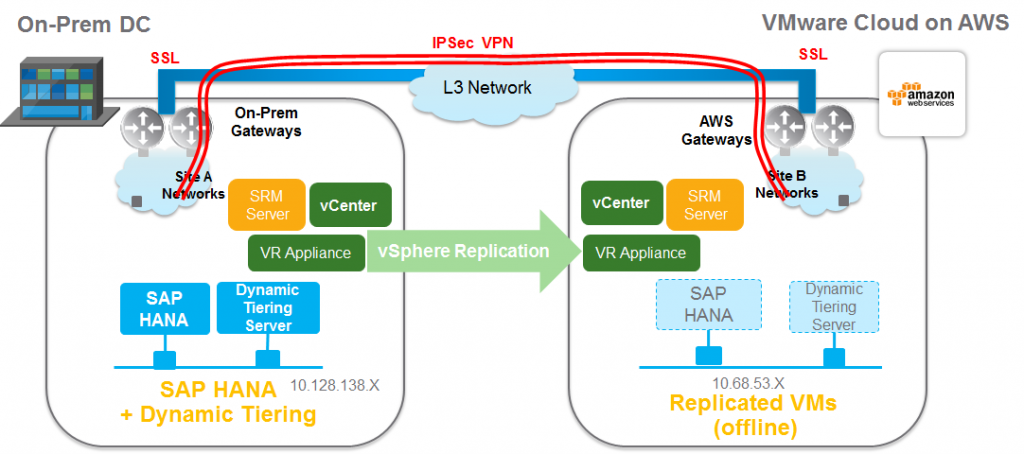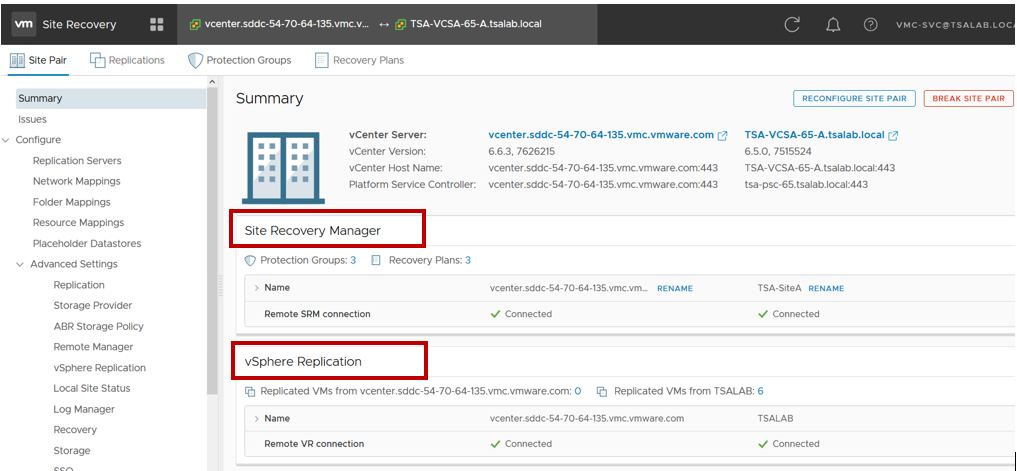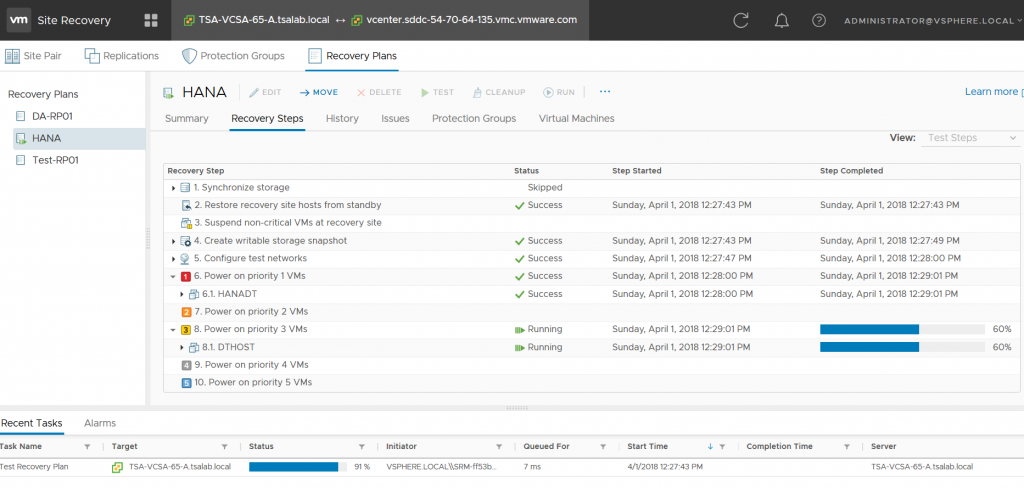SAP HANA based applications support critical business processes which typically require disaster recovery (DR) solutions to minimize downtime in case of site failure. This requirement can be addressed by Disaster Recovery as a Service (DRaaS). DRaaS has now evolved into a mainstream offering that can provide cost benefits and DR design flexibility for SAP customers. DRaaS is defined by Gartner “as a service offering that includes replication of server workloads and recovery of such workloads, as needed, to a cloud with which the provider ultimately has fiscal responsibility”. The VMware solution is provided by VMware Site Recovery Service for VMware Cloud on AWS and is described here. The solution is based upon VMware’s proven VMware Site Recovery Manager for advanced orchestration automation and vSphere Replication for flexible, hypervisor-based replication.
As mentioned in the links above the benefits include:
- Accelerate time-to-protection: Remove the need to build a secondary DR site and implement DR in a day with familiar tools and the same operating environment from on-premises to the public cloud
- Simplify DR operations: Streamline operations with automated failover and failback and simplify ongoing maintenance and non-disruptive testing
- Apply Cloud Economics: Reduce secondary site management costs with cloud-managed infrastructure and only pay for what you use with granular, on-demand cloud pricing
SAP HANA based applications include multiple SAP systems and different tiers from database , application to web tiers. All these components can be replicated and orchestrated to start up in the desired sequence with VMware Site Recovery – this helps to lower the RTO during a site failover.
VMware vSphere Replication can provide a RPO of 5 minutes. The SAP HANA files replicated to the DR site will be a crash-consistent copy of the source SAP HANA virtual machine. (vSphere Replication guarantees crash consistency amongst all the disks that belong to a virtual machine). SAP HANA can recover from a hard shutdown via log recovery.
We conducted a functional proof-of-concept of SAP HANA failover with VMware Site Recovery Service for VMware Cloud on AWS and this is described next.
VMware Cloud on AWS is not supported for SAP workloads at this time. Please stay tuned to https://twitter.com/vmwarecloudaws .
Functional proof-of-Concept
The logical architecture of the proof-of-concept is shown below.

Site Recovery Manager is an add-on feature to VMware Cloud on AWS. The software is installed and configured by VMware when the add-on is enabled. The customer is responsible for the installation of Site Recovery and vSphere Replication components in the on-premise datacenter. VMware Site Recovery is deployed in a paired configuration: protected/on-premise site; and recovery/VMware Cloud on AWS site.
In this demonstration an SAP HANA system and Dynamic Tiering server are included in the scope of replication and failover testing. SAP HANA dynamic tiering is an option where SAP HANA has the ability to keep data in either memory or on disk in a columnar format. Data is not duplicated. The warm data is on a separate dedicated host called the dynamic tiering server. The SAP HANA system and dynamic tiering server virtual machines need to communicate with each other and need to be tested together during this site recovery scenario.
The following screenshot shows the new HTML5 UI based GUI which provides a unified interface for vSphere Replication and VMware Site Recovery.

The following screenshot shows the recovery plan for the SAP HANA system.

Recovery Plans in VMware Site Recovery are like an automated runbook, controlling all the steps in the recovery process. The recovery plan is the level at which actions like failover, planned migration, testing and re-protect are conducted. A recovery plan contains one or more protection groups and a protection group can be included in more than one recovery plan. Virtual machines are assigned to protection groups. This provides for the flexibility to test or recover a single SAP application by itself and also test or recover a group of SAP applications or the entire SAP landscape. In this example one protection group was created that included the SAP HANA system and Dynamic Tiering Virtual Machines.

The functional proof-of -concept is recorded in a demo that is available here. The demo shows:
- An overview of the VMware Site Recovery configuration (protection groups, recovery plan and IP customization).
- A test run of a recovery plan that recovers the SAP HANA system and Dynamic Tiering Server on VMware Cloud on AWS.
For more technical details of VMware’s DRaaS solution see the VMware Site Recovery Technical Overview Whitepaper.




